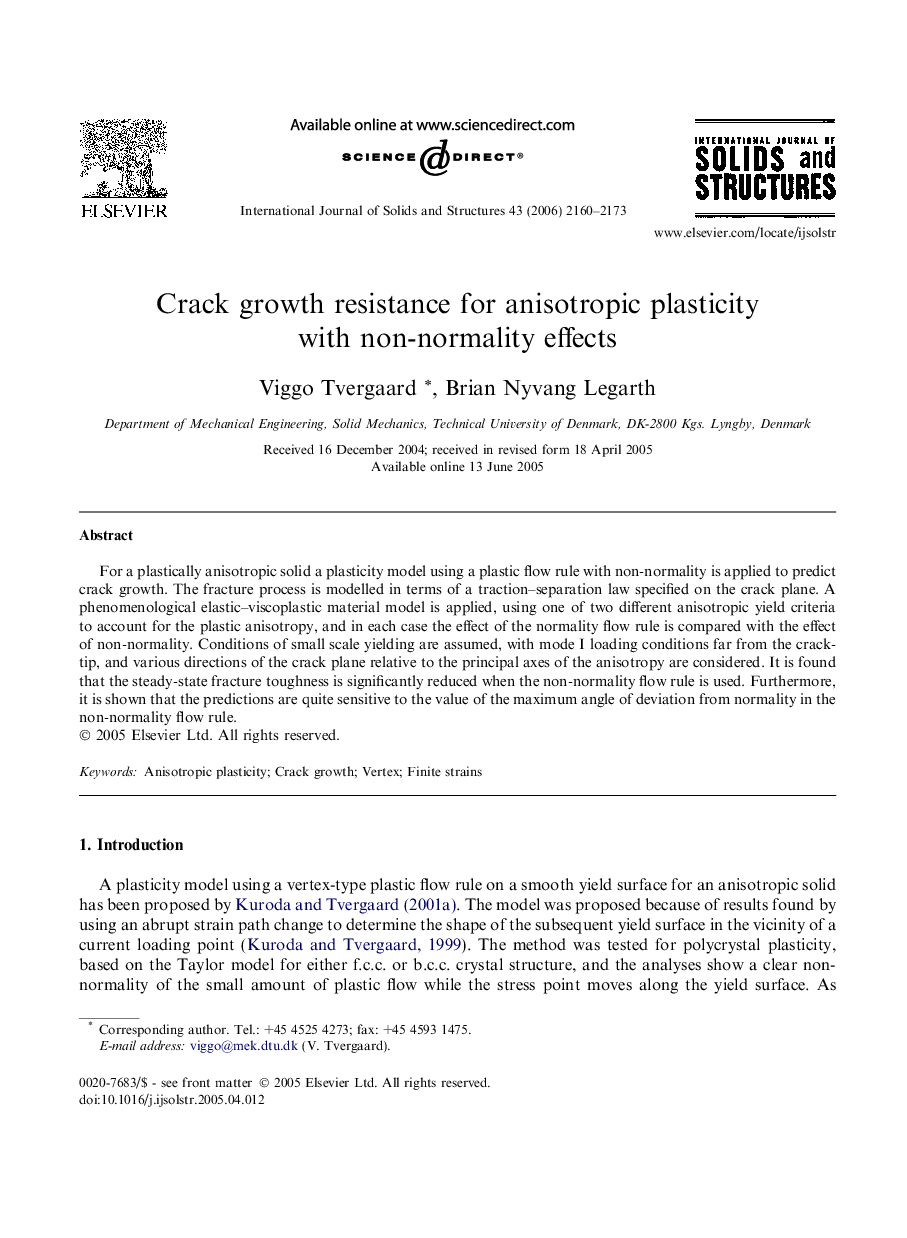| Article ID | Journal | Published Year | Pages | File Type |
|---|---|---|---|---|
| 280827 | International Journal of Solids and Structures | 2006 | 14 Pages |
For a plastically anisotropic solid a plasticity model using a plastic flow rule with non-normality is applied to predict crack growth. The fracture process is modelled in terms of a traction–separation law specified on the crack plane. A phenomenological elastic–viscoplastic material model is applied, using one of two different anisotropic yield criteria to account for the plastic anisotropy, and in each case the effect of the normality flow rule is compared with the effect of non-normality. Conditions of small scale yielding are assumed, with mode I loading conditions far from the crack-tip, and various directions of the crack plane relative to the principal axes of the anisotropy are considered. It is found that the steady-state fracture toughness is significantly reduced when the non-normality flow rule is used. Furthermore, it is shown that the predictions are quite sensitive to the value of the maximum angle of deviation from normality in the non-normality flow rule.
